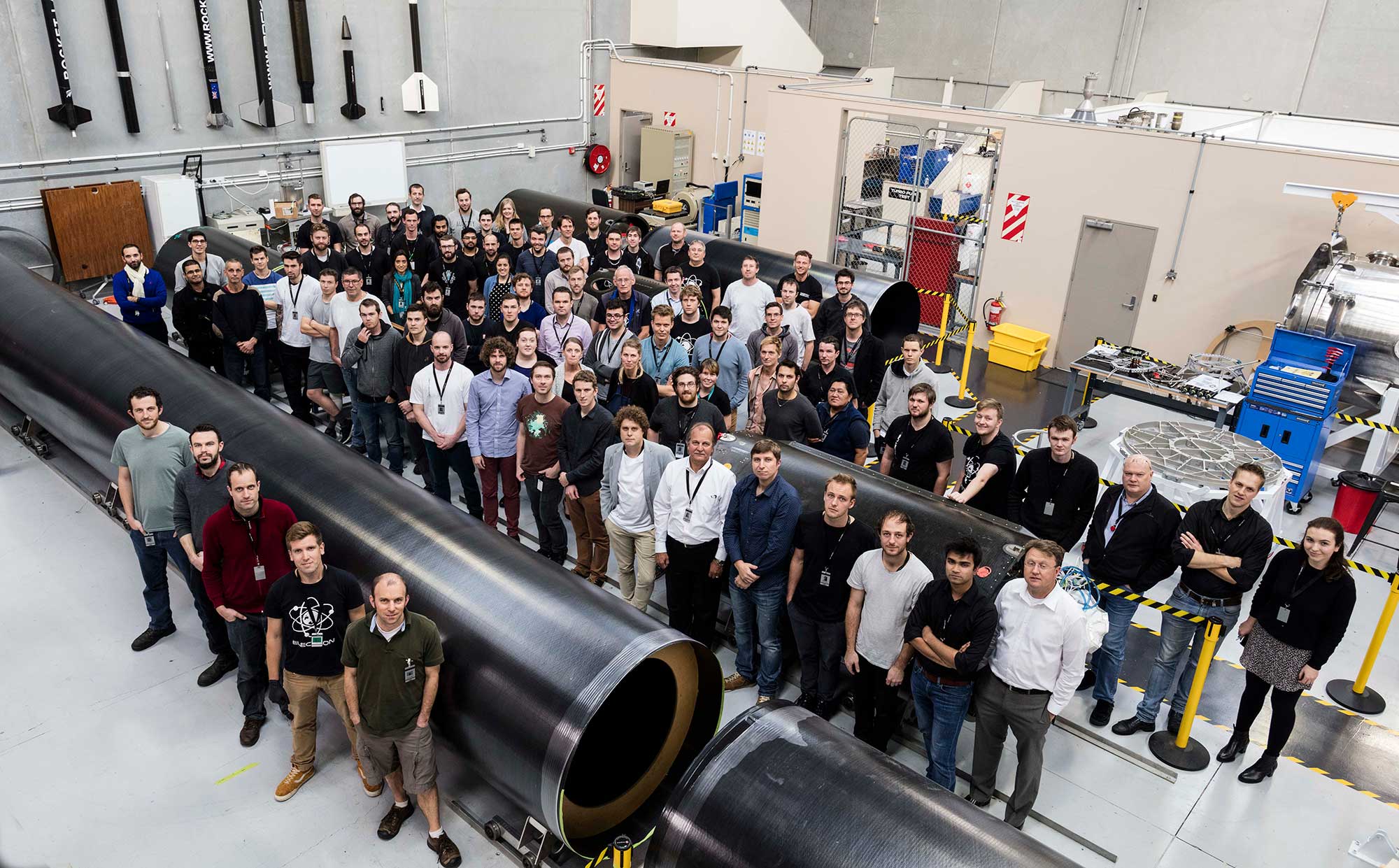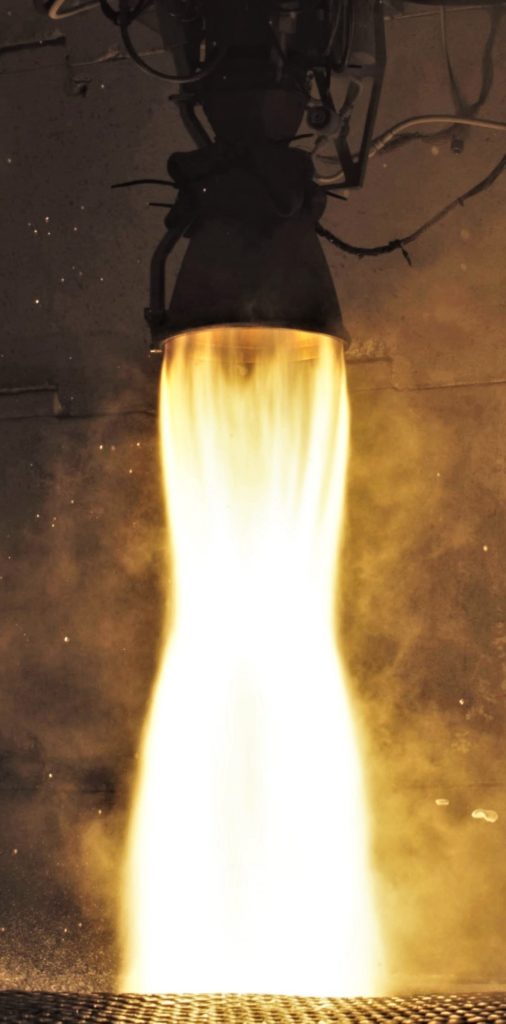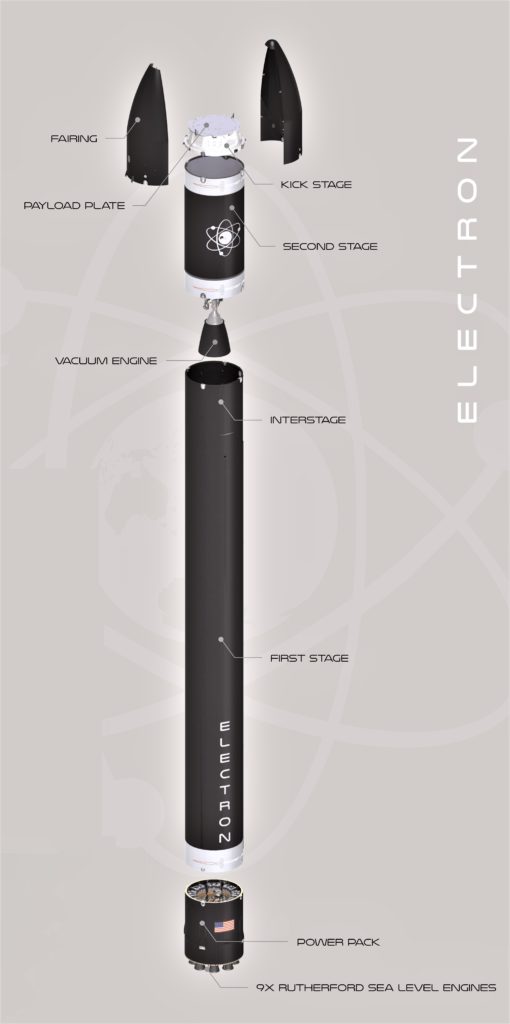News
DeepSpace: Rocket Lab ready for first commercial launch of 2019, an innovative DARPA spacecraft

This is a free preview of DeepSpace, Teslarati’s new member-only weekly newsletter. Each week, I’ll be taking a deep-dive into the most exciting developments in commercial space, from satellites and rockets to everything in between.
If you’d like to receive this DeepSpace newsletter and all of our newsletters and membership benefits, you can become a member for as little as $3/month here.
Now approximately four months distant from the inaugural commercial launch of Rocket Lab’s Electron rocket, the company is ready – following many weeks of customer-side delays – to conduct its first launch of 2019, aiming to place an experimental DARPA-funded satellite into low Earth orbit (LEO).
If all goes as planned with the launch and experimental spacecraft’s orbital operations, Defense Advanced Research Projects Agency (DARPA) hopes to use the mission to qualify a currently-untested technology that could ultimately enable the production of massive communications and sensing antennas that can fit on relatively tiny satellites. Known as R3D2 (ha…ha…), the mission also effectively serves as the latest operational debut of DARPA’s growing interest and involvement in spaceflight-related industries, nominally proving that the agency is capable of leaning on established companies and startups to rapidly design, build, and fly satellites. Barring any additional launch delays from DARPA’s preparations, Rocket Lab hopes to launch Electron around the end of this week – likely March 22-24 – to kick off what will hopefully be a busy and productive year for the newly operational launch provider.
DARPA in Space
- Originally targeted for sometime in the second half of February, the R3D2 mission – Electron’s fifth planned launch in 18 months – has suffered several weeks of delays due to issues faced by DARPA during satellite delivery and pre-launch preparations.
- Aside from a general hint that the satellite arrived a few weeks later than planned and an official statement from Rocket Lab that “DARPA’s payload team is conducting final ground station configuration work over the coming days”, the process appears to be going rather smoothly.
- Weighing in at roughly 150 kg (330 lb), the R3D2 spacecraft – barring the quiet inclusion of co-passengers – will be the first launch of Electron dedicated to a single satellite. In fact, 150 kg is actually the maximum listed payload that Electron is capable of launching to a 500 km (310 mi) sun-synchronous orbit (SSO), providing a functional ‘ceiling’ for the ultimate destination of DARPA’s satellite.
- R3D2’s primary purpose will be to extensively test a brand new antenna technology and thus prove (hopefully) that the in-space deployment mechanism and unique material composition function as designed. Likely no more than 1-2 feet (~50 cm) across, the definitively small satellite will attempt to deploy an antenna many times larger than itself.
- Made out of a material known as Kapton, the deployable antenna will reach a maximum diameter of 2.25 m (7.4 ft), fairly large even when compared with antennas used on satellites many dozens of times more massive.
Rocket Lab’s Biggest year yet
- Although the company is off to a relatively slow start, as many as eleven Electron missions – including R3D2 – are at least tentatively manifested for launches in 2019.
- In November and December of 2018, Rocket Lab further demonstrated that it is more than capable of a respectable monthly launch cadence, particularly impressive for a rocket conducting its third and fourth missions ever. If Rocket Lab can more or less sustain that cadence after DARPA’s R3D2, the company could ultimately complete as many as 8-10 launches this year.
- Ultimately, founder and CEO Peter Beck says that Rocket Lab and Electron will eventually target dozens of annual launches per year and a weekly launch cadence from an array of launch facilities.
- Earlier this year, Rocket Lab officially announced that it had come to an agreement with the state of Virginia to build its second launch complex (LC-2) at Wallops Flight Facility (also known as the Mid-Atlantic Spaceport). If construction proceeds apace, the company’s first US-based Electron launch could occur before the end of 2019.

- DARPA’s goal with R3D2 – and its interest in space and small satellites in general – should ultimately benefit the entire spaceflight industry, potentially paving the way for the design and production of small satellites with technical capabilities that far outstretch their compact nature.
- Reliable and affordable deployable structures are becoming a growing focus of a number of young and old spaceflight companies, ranging from heavyweights like SSL/Maxar to new startups like Oxford Space Systems.
- Unlike most modern defense and aerospace technology procurement, DARPA is also distinctly focused on streamlining the process of designing, building, and launching spacecraft. To do so, the agency plans to rely heavily on established commercial entities to optimize speed and affordability will still ultimately producing innovative space systems and pushing the state of the art forward.
- Aside from closely involved projects like R3D2, DARPA – through a program called Blackjack – is also extremely interested in a number of LEO communications constellations proposed in the last few years by companies like SpaceX, OneWeb, and Telesat, and has already awarded a series of small contracts with several to begin the program’s earliest phases.
Mission Updates
- Completed on March 8th, SpaceX’s near-flawless Crew Dragon launch, space station rendezvous, and recovery is likely the last of the company’s orbital launch activities for the month of March.
- The second launch of Falcon Heavy – the rocket’s commercial debut – is currently expected to occur as early as April 7th
- After Falcon Heavy, SpaceX has at least one other launch – Cargo Dragon’s CRS-17 resupply mission – firmly scheduled for April (April 25th), as well as the more tenuous possibility of the first dedicated Starlink launch occurring as early as late April.
Photos of the Week:
NASA posted a series of official photos documenting SpaceX’s Crew Dragon recovery process following the spacecraft’s first successful orbital reentry and splashdown. The photo below (top) offers one of the best (and most detailed) views ever made public of one of the heat shields of a SpaceX Dragon spacecraft, offering a glimpse of the wear the PICA-X material experiences after several minutes of extreme heating and buffeting. (c. NASA/Cory Huston)

Back on land, SpaceX’s South Texas entourage has continued to build the first full-scale Starship prototype – nicknamed Starhopper – in preparation for the vehicle’s inaugural static-fire and hop tests. According to official SpaceX statements, those tests could occur as early as this week, partially confirmed by the first installation of a Raptor engine (serial number 2) on a flight article of any kind.(c. NASASpaceflight – bocachicagal)


Elon Musk
Elon Musk’s X will start using a Tesla-like software update strategy
The initiative seems designed to accelerate updates to the social media platform, while maintaining maximum transparency.

Elon Musk’s social media platform X will adopt a Tesla-esque approach to software updates for its algorithm.
The initiative seems designed to accelerate updates to the social media platform, while maintaining maximum transparency.
X’s updates to its updates
As per Musk in a post on X, the social media company will be making a new algorithm to determine what organic and advertising posts are recommended to users. These updates would then be repeated every four weeks.
“We will make the new 𝕏 algorithm, including all code used to determine what organic and advertising posts are recommended to users, open source in 7 days. This will be repeated every 4 weeks, with comprehensive developer notes, to help you understand what changed,” Musk wrote in his post.
The initiative somewhat mirrors Tesla’s over-the-air update model, where vehicle software is regularly refined and pushed to users with detailed release notes. This should allow users to better understand the details of X’s every update and foster a healthy feedback loop for the social media platform.
xAI and X
X, formerly Twitter, has been acquired by Elon Musk’s artificial intelligence startup, xAI last year. Since then, xAI has seen a rapid rise in valuation. Following the company’s the company’s upsized $20 billion Series E funding round, estimates now suggest that xAI is worth tens about $230 to $235 billion. That’s several times larger than Tesla when Elon Musk received his controversial 2018 CEO Performance Award.
As per xAI, the Series E funding round attracted a diverse group of investors, including Valor Equity Partners, Stepstone Group, Fidelity Management & Research Company, Qatar Investment Authority, MGX, and Baron Capital Group, among others. Strategic partners NVIDIA and Cisco Investments also continued support for building the world’s largest GPU clusters.
News
Tesla FSD Supervised wins MotorTrend’s Best Driver Assistance Award
The decision marks a notable reversal for the publication from prior years, with judges citing major real-world improvements that pushed Tesla’s latest FSD software ahead of every competing ADAS system.

Tesla’s Full Self-Driving (Supervised) system has been named the best driver-assistance technology on the market, earning top honors at the 2026 MotorTrend Best Tech Awards.
The decision marks a notable reversal for the publication from prior years, with judges citing major real-world improvements that pushed Tesla’s latest FSD software ahead of every competing ADAS system. And it wasn’t even close.
MotorTrend reverses course
MotorTrend awarded Tesla FSD (Supervised) its 2026 Best Tech Driver Assistance title after extensive testing of the latest v14 software. The publication acknowledged that it had previously criticized earlier versions of FSD for erratic behavior and near-miss incidents, ultimately favoring rivals such as GM’s Super Cruise in earlier evaluations.
According to MotorTrend, the newest iteration of FSD resolved many of those shortcomings. Testers said v14 showed far smoother behavior in complex urban scenarios, including unprotected left turns, traffic circles, emergency vehicles, and dense city streets. While the system still requires constant driver supervision, judges concluded that no other advanced driver-assistance system currently matches its breadth of capability.
Unlike rival systems that rely on combinations of cameras, radar, lidar, and mapped highways, Tesla’s FSD operates using a camera-only approach and is capable of driving on city streets, rural roads, and freeways. MotorTrend stated that pure utility, the ability to handle nearly all road types, ultimately separated FSD from competitors like Ford BlueCruise, GM Super Cruise, and BMW’s Highway Assistant.
High cost and high capability
MotorTrend also addressed FSD’s pricing, which remains significantly higher than rival systems. Tesla currently charges $8,000 for a one-time purchase or $99 per month for a subscription, compared with far lower upfront and subscription costs from other automakers. The publication noted that the premium is justified given FSD’s unmatched scope and continuous software evolution.
Safety remained a central focus of the evaluation. While testers reported collision-free operation over thousands of miles, they noted ongoing concerns around FSD’s configurable driving modes, including options that allow aggressive driving and speeds beyond posted limits. MotorTrend emphasized that, like all Level 2 systems, FSD still depends on a fully attentive human driver at all times.
Despite those caveats, the publication concluded that Tesla’s rapid software progress fundamentally reshaped the competitive landscape. For drivers seeking the most capable hands-on driver-assistance system available today, MotorTrend concluded Tesla FSD (Supervised) now stands alone at the top.
News
Elon Musk’s Grokipedia surges to 5.6M articles, almost 79% of English Wikipedia
The explosive growth marks a major milestone for the AI-powered online encyclopedia, which was launched by Elon Musk’s xAI just months ago.

Elon Musk’s Grokipedia has grown to an impressive 5,615,201 articles as of today, closing in on 79% of the English Wikipedia’s current total of 7,119,376 articles.
The explosive growth marks a major milestone for the AI-powered online encyclopedia, which was launched by Elon Musk’s xAI just months ago. Needless to say, it would only be a matter of time before Grokipedia exceeds English Wikipedia in sheer volume.
Grokipedia’s rapid growth
xAI’s vision for Grokipedia emphasizes neutrality, while Grok’s reasoning capabilities allow for fast drafting and fact-checking. When Elon Musk announced the initiative in late September 2025, he noted that Grokipedia would be an improvement to Wikipedia because it would be designed to avoid bias.
At the time, Musk noted that Grokipedia “is a necessary step towards the xAI goal of understanding the Universe.”
Grokipedia was launched in late October, and while xAI was careful to list it only as Version 0.1 at the time, the online encyclopedia immediately earned praise. Wikipedia co-founder Larry Sanger highlighted the project’s innovative approach, noting how it leverages AI to fill knowledge gaps and enable rapid updates. Netizens also observed how Grokipedia tends to present articles in a more objective manner compared to Wikipedia, which is edited by humans.
Elon Musk’s ambitious plans
With 5,615,201 total articles, Grokipedia has now grown to almost 79% of English Wikipedia’s article base. This is incredibly quick, though Grokipedia remains text-only for now. xAI, for its part, has now updated the online encyclopedia’s iteration to v0.2.
Elon Musk has shared bold ideas for Grokipedia, including sending a record of the entire knowledge base to space as part of xAI’s mission to preserve and expand human understanding. At some point, Musk stated that Grokipedia will be renamed to Encyclopedia Galactica, and it will be sent to the cosmos.
“When Grokipedia is good enough (long way to go), we will change the name to Encyclopedia Galactica. It will be an open source distillation of all knowledge, including audio, images and video. Join xAI to help build the sci-fi version of the Library of Alexandria!” Musk wrote, adding in a later post that “Copies will be etched in stone and sent to the Moon, Mars and beyond. This time, it will not be lost.”













